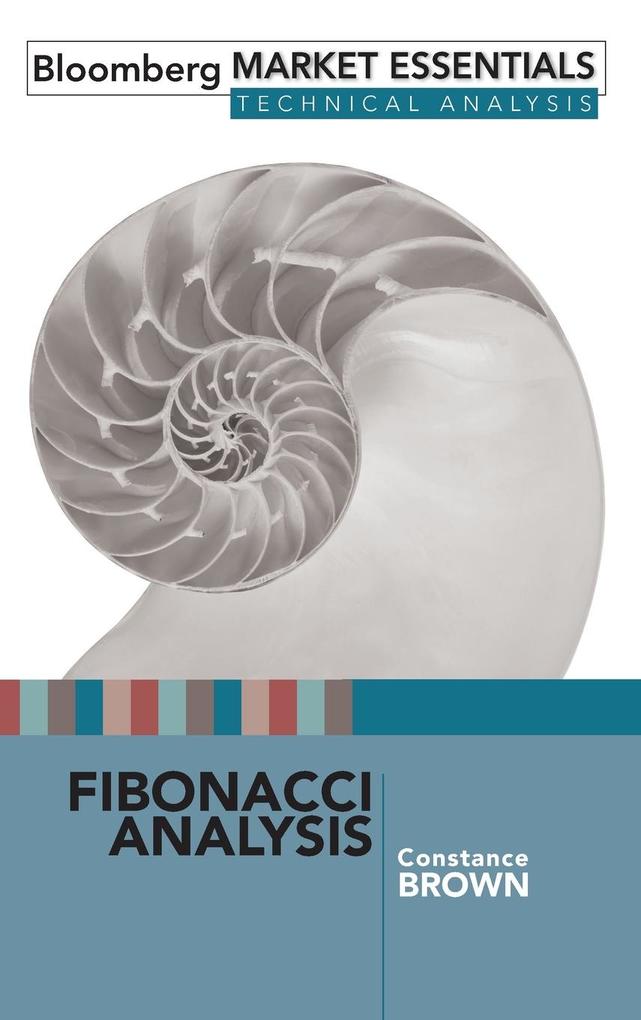
Zustellung: Mo, 16.06. - Fr, 20.06.
Versand in 2 Wochen
VersandkostenfreiBestellen & in Filiale abholen:
Part of the new Bloomberg Market Essentials series, Fibonacci Analysis provides a concise and accessible assessment of how Fibonacci works, the basic strategies with which it is linked and how iti can be used to identify future market prices.
Fibonacci analysis--named after the thirteenth-century Italian mathematician--is an extremely effective tool for understanding market movement. Nevertheless, Fibonacci analysis can be difficult to understand, preventing most traders from taking full advantage of this valuable technique.
Fibonacci Analysis gives traders a concise and clear explanation of what this tool is, how it works, and how to apply it in today's markets. Constance Brown covers a wide range of topics including Fibonacci analysis in cycles of expansion and contraction, Fibonacci ratios for price projection, and applications for time analysis. Brown offers practical guidance on such specific tools as rhythmic wave diagrams, support and resistance, proportional analysis, and use with oscillators.
Fibonacci Analysis is eminently practical, showing the most effective use of a technique that can increase the probability of trading success.
Fibonacci Analysis gives traders a concise and clear explanation of what this tool is, how it works, and how to apply it in today's markets. Constance Brown covers a wide range of topics including Fibonacci analysis in cycles of expansion and contraction, Fibonacci ratios for price projection, and applications for time analysis. Brown offers practical guidance on such specific tools as rhythmic wave diagrams, support and resistance, proportional analysis, and use with oscillators.
Fibonacci Analysis is eminently practical, showing the most effective use of a technique that can increase the probability of trading success.
Inhaltsverzeichnis
List of Illustrations ix
Acknowledgments xiii
Introduction xv
1 The Mystery of Phi (1. 618) and phi (0. 618) 1
2 The Concept of Market Expansion and Contraction 15
3 Support, Resistance, and Price Projections 43
4 Bridging the Gap Between the Nautilus Shell and a Market Chart 61
5 Fibonacci Channels, Angles, and Cycles with Oscillators 77
6 Fibonacci Expansion Targets and Confluence in Time 105
7 Rhythmic Wave Diagrams 137
8 Harmonic Unity Within Market Price and Time 143
Appendix A 163
Appendix B: Common Errors 165
Selected Bibliography 171
Index 177
Acknowledgments xiii
Introduction xv
1 The Mystery of Phi (1. 618) and phi (0. 618) 1
2 The Concept of Market Expansion and Contraction 15
3 Support, Resistance, and Price Projections 43
4 Bridging the Gap Between the Nautilus Shell and a Market Chart 61
5 Fibonacci Channels, Angles, and Cycles with Oscillators 77
6 Fibonacci Expansion Targets and Confluence in Time 105
7 Rhythmic Wave Diagrams 137
8 Harmonic Unity Within Market Price and Time 143
Appendix A 163
Appendix B: Common Errors 165
Selected Bibliography 171
Index 177
Mehr aus dieser Reihe
Produktdetails
Erscheinungsdatum
01. August 2008
Sprache
englisch
Seitenanzahl
208
Reihe
Bloomberg Professional
Autor/Autorin
Constance Brown
Verlag/Hersteller
Produktart
gebunden
Gewicht
461 g
Größe (L/B/H)
235/157/16 mm
ISBN
9781576602614
Entdecken Sie mehr
Bewertungen
0 Bewertungen
Es wurden noch keine Bewertungen abgegeben. Schreiben Sie die erste Bewertung zu "Fibonacci Analysis" und helfen Sie damit anderen bei der Kaufentscheidung.















